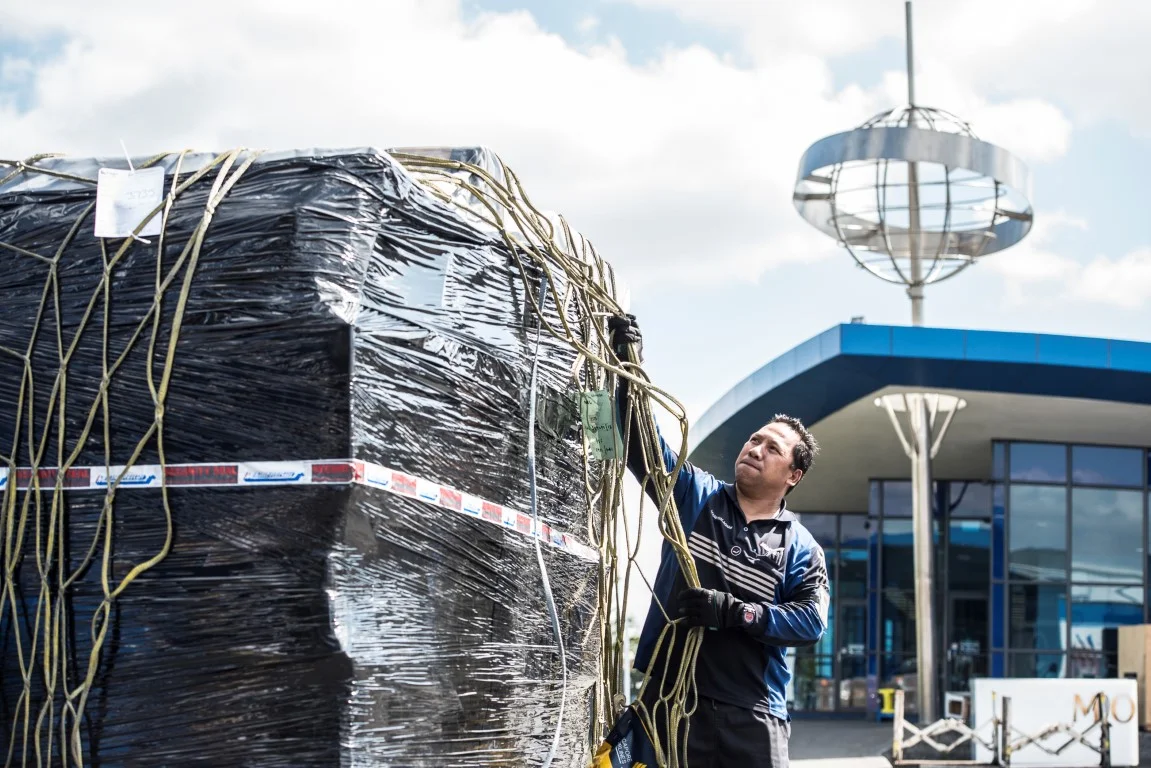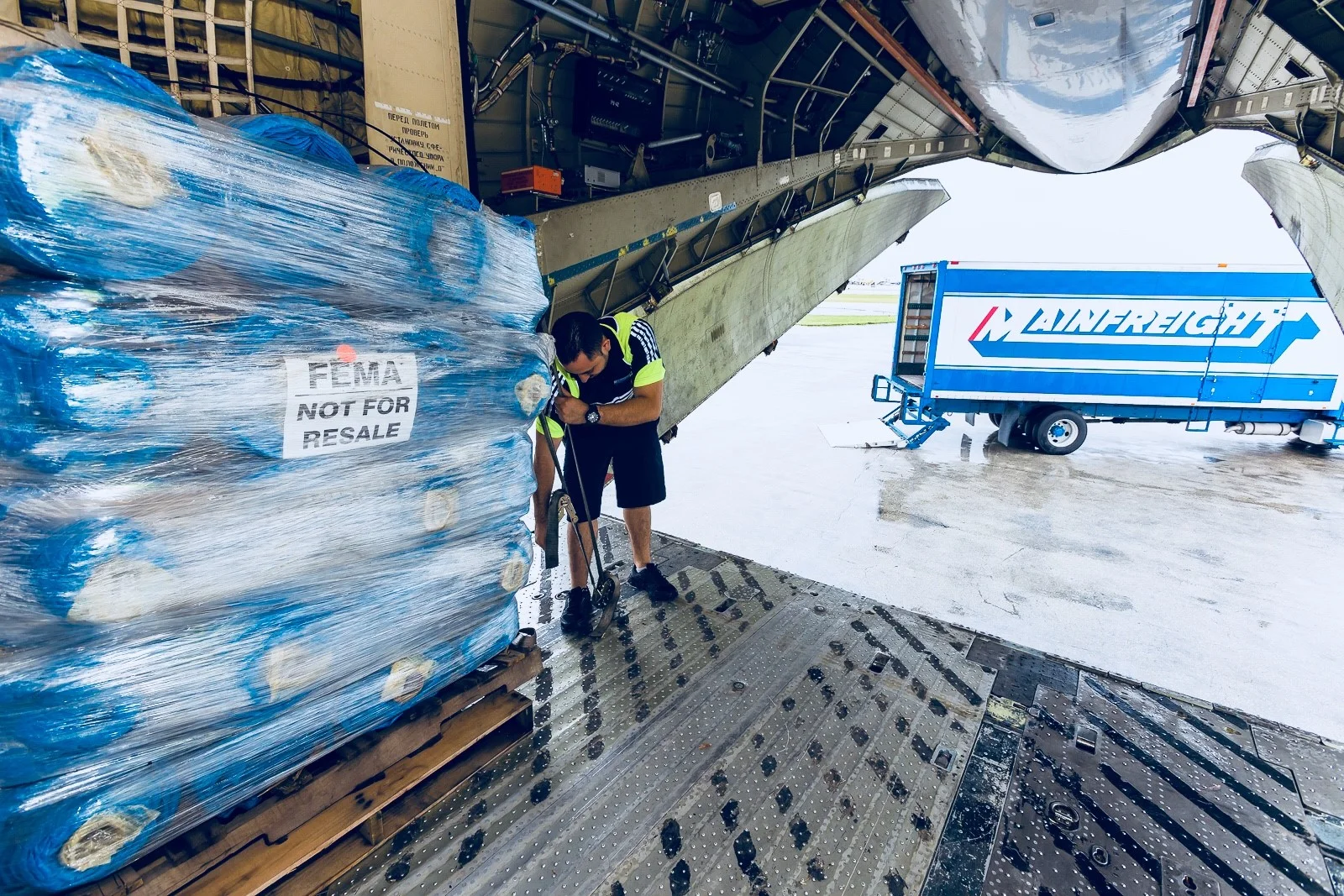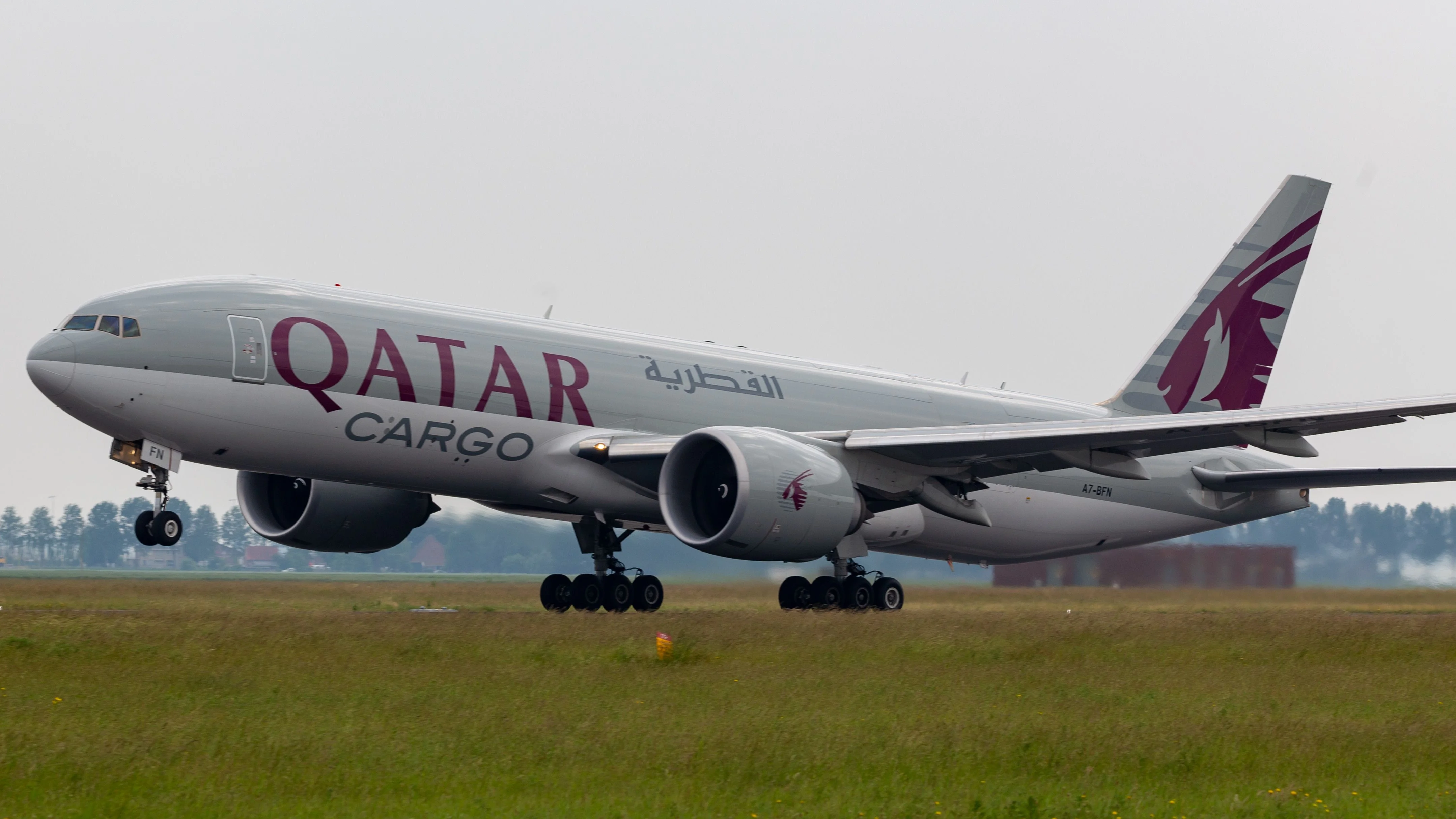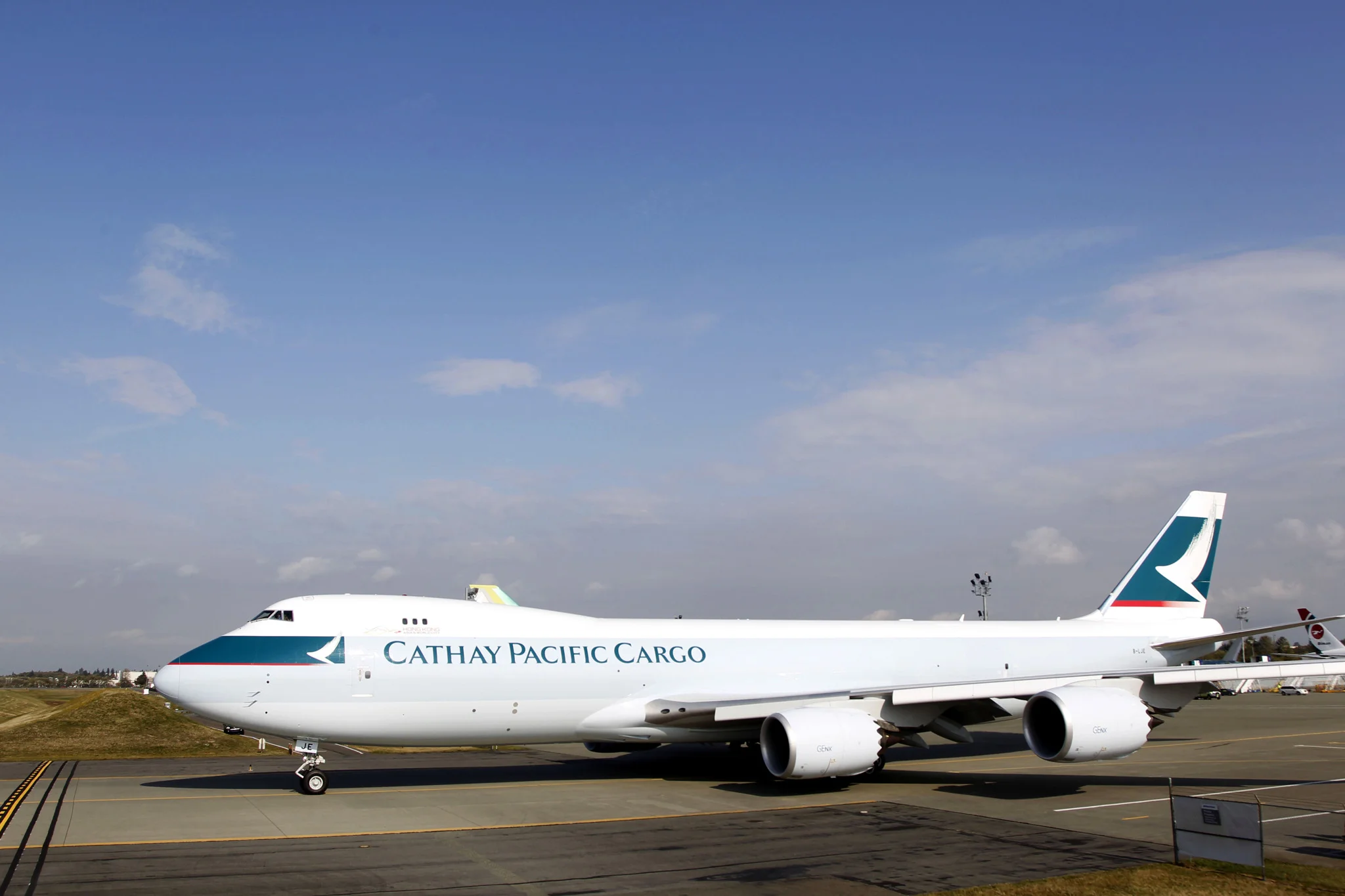- 07 October 2025
Your Guide to Aircraft Types
It is estimated that anywhere between 70-90% of global trade is moved via sea freight whereas less than 10% of goods are transported via air. Although airfreight accounts for a small share of global trade by volume, the goods transported by air tend to be significantly higher in value compared to those shipped by sea. Freight charges for air cargo can be more than ten times higher than those for sea transport. This steep cost difference is driven by the urgency of time-sensitive deliveries and the significantly higher operating expenses associated with aircraft.
Despite the cost, airfreight offers unmatched speed and reliability, making it the preferred choice for high-value, perishable or time-critical shipments where every hour counts. However not all airfreight movements are created equal and within the airfreight space there are some significant differences between freighter aircraft (known as CAO – Cargo Aircraft Only), and passenger (PAX) services.
Air Freight Terminology
-
Freight / CAO (Cargo Aircraft Only): Aircraft dedicated exclusively to freight transport
-
PAX: Abbreviation for "passengers," referring to passenger aircraft
-
Combi: Aircraft configured to carry both passengers and freight on the main deck
-
Converted freighter: Passenger aircraft converted into a cargo aircraft

Mainfreight New Zealand

Mainfreight Australia
Freighter Aircarft (CAO)
Freighter services account for a smaller portion of total flights and destinations served, but they offer greater flexibility in the types of shipments accepted for air cargo, accommodating a wider range of commodities, classifications and sizes.
Freighter aircraft are purpose-built to transport cargo exclusively. They typically offer two types of storage areas - main deck and lower deck space.
-
Main deck space refers to the area where passengers would normally sit on a standard commercial aircraft. Because this space is repurposed for cargo in freighter aircraft, it comes with a strict height limit - cargo must not exceed 1.6 metres.
-
Lower deck space refers to the area beneath the passenger seating in an aircraft. Most commercial planes used for business or leisure travel include this lower deck cargo space. Freighter-only aircraft, however, are equipped with both lower and main deck cargo areas, allowing for greater capacity and flexibility
Freighter aircraft designs vary significantly, which means their payload capacities differ as well. The primary freighter models commonly seen in the Australian market include:
-
B737F: Capable of carrying up to 23 tonnes of cargo, with maximum load dimensions of 3.3 metres in width and 2.18 metres in height. This freighter operates across all major airports in Australia.
-
B767F: Capable of carrying up to 52 tonnes of cargo, with maximum load dimensions of 3.6 metres in width and 2.6 metres in height. The freighter operates for specific charter services.
-
B777F: Capable of carrying up to 102 tonnes of cargo, with maximum load dimensions of 3.73 metres in width and 3 metres in height. This freighter operates to Brisbane, Perth, Sydney and Melbourne, serviced by Emirates, Qatar, Singapore Airlines.
-
B747F: Capable of carrying up to 113-137 tonnes of cargo. The side has a maximum load dimension of 3.4 metres wide and 3 metres high. The nose has a maximum load dimension of 3.56 metres wide and 2.44 metres high. Cathay Pacific and Polar Airlines run services into Brisbane, Melbourne, Sydney and Perth.
Commonly asked questions about Freighter aircrafts
What cargo types can I ship on a Freighter aircraft?
Since Freighter aircraft are built solely for transporting goods and do not carry passengers, they face fewer safety constraints related to human life. This enables them to transport a broader spectrum of high-risk cargo, including larger quantities of dangerous goods, valuable perishables and oversized general freight that may require specific dimensions in length, height, or width.
Where do Freighter aircrafts operate?
Freighters operate on designated flight paths. Since certain airports are restricted to passenger planes only, chartered cargo aircraft must land at alternative airports. This separation helps streamline operations by allowing dedicated facilities and sufficient time for unloading and handling freight efficiently. It is important to note that freighter services are not as regular as PAX services but can be chartered on request.
Did you know?
During the COVID-19 pandemic, there were many aircraft which were marketed as “P2F” freighters (passenger to freighter), which essentially meant that freight was either being put on passenger seats, or the seats were taken out and converted to carry cargo.
Examples of Freighter Aircraft

Qatar B777F

Cathay Pacific B747F
Passenger (PAX)
PAX aircraft, short for passenger aircraft, operate on regular schedules and are primarily driven by passenger demand rather than freight. These are the commercial flights that you or I would take for business or leisure travel. While not designed specifically for cargo, PAX services offer a flexible, frequent and often more cost-effective way to transport goods by air. However, they come with limitations, particularly in the types of cargo they can carry. Dangerous goods are heavily restricted due to safety concerns for passengers, and the available space in the aircraft’s lower deck cargo hold is limited in size and capacity.
It is important to understand that with PAX services, the amount of cargo PAX aircraft can hold will be dependent on these three main factors:
-
Passenger load factor (more passengers = less cargo volume)
-
Route distance and payload-range trade-offs
-
Aircraft configuration and hold dimensions
The primary PAX models commonly seen in the Australian market include:
-
Narrow Body aircraft (A320 & B737): Capable of carrying up to 1-6 tonnes of cargo, usually small pallets and cartons and operate to all airports across Australia.
-
Wide Body aircraft (A330, A350, A380, B777, B787, B767, B747): Depending on the aircraft type and flight distance, it can carry between 10 and 25 tonnes of cargo. It typically transports small pallets and cartons and operates routes to most capital cities.
Although passenger services are primarily designed for transporting people, approximately 55% of all international cargo shipped by air was carried in the belly holds of passenger aircraft.
Commonly asked questions about PAX aircrafts
What cargo types can I ship on a PAX aircraft?
PAX aircraft can carry the majority of non-dangerous goods cargo, such as electronics, textiles, etc. Security in passenger aviation is higher than for cargo-only aviation and this means limitations on the types of cargo that can be transported. Some dangerous goods, for example, can be loaded but compliance with passenger aviation regulations will be essential.
Where is cargo stored in a PAX aircraft?
Cargo is placed in the belly of the aircraft, contained inside unit load devices (ULDs) that fit into this area beneath where passengers sit. Some goods may be loaded onto pallets, and other items may be loaded individually into the remaining space. There may also be a temperature-controlled, pressurised area for transporting live animals separately from other cargo and passenger luggage.
How Mainfreight can help your air freight imports and exports?
CAO (Cargo Aircraft Only) and PAX (Passenger Aircraft Cargo) services both provide fast and efficient air freight solutions. However, not all cargo can to be transported using both methods. Factors such as the nature of the cargo, its value, composition, urgency and budget constraints all play a critical role in determining the most suitable option.
At Mainfreight, we offer flexible air freight solutions tailored to your needs, including consolidation services, full pallet shipments, and project cargo. Our experienced team provides expert guidance on route planning and airline requirements, helping you make informed decisions and optimise your supply chain with confidence.
Fast connections via air freight
When speed is non negotiable, our air freight service delivers. We move your cargo quickly, reliably, and with precision - from consolidated parcels to full pallet loads and complex project freight. With worldwide reach and efficient handling, we get your goods to market faster, so you can meet commitments and stay ahead
Find out more here